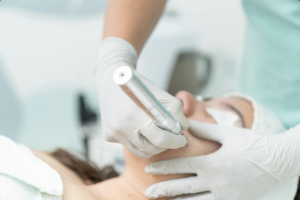MRI vs. CT Scan: Which One Do You Need and How Much Does It Cost?
Medical imaging uses a variety of technologies to produce images of the tissues and organs of the human body for diagnostic, monitoring, and treatment purposes. Medical imaging enables medical professionals to diagnose and decide on appropriate treatments for injuries and diseases, such as whether to operate or not.
Medical imaging improves diagnoses and treatments by providing clear pictures for doctors of what they are dealing with, leading to more effective treatments, and saving lives.
There are several medical imaging techniques for diagnostic and treatment purposes, including MRI (Magnetic Resonance Imaging) and CT (Computed Tomography) scans. While CT and MRI scans create detailed images of organs, tissues, bones and blood vessels inside the body, they are different technologies.
The purpose of this article is to help patients understand whether they need an MRI or a CT scan and what the cost of each will be.
1. Understanding MRI and CT Scans
What is An MRI Scan?
An MRI uses a strong magnet and radio waves to produce detailed images of the inside of your body. The magnet creates a magnetic field and the hydrogen atoms in your tissues align with the magnetic field. The radio waves detect and record the changes in alignment to create cross-sectional images of the scanned are
MRIs are used to detect issues with soft tissues, such as brain or spinal cord tumours, brain and spine infections, ligament and tendon injuries, muscle degradation, bone tumours, and blood vessel blockages. Doctors can also use MRIs to diagnose multiple sclerosis.
MRIs of the heart show:
- The size and condition of the heart and its structures
- Heart tumours, infections and inflammatory conditions
- Damage due to coronary artery disease
Whole-body MRIs reveal such issues as:
- Inflammatory bowel disease, such as Crohn’s
- Details of internal organs
- Major arteries and soft tissues, lymph nodes, nodules, plaque in arteries
- Abnormalities in the chest, abdomen or pelvis
- Details of the male prostate and female pelvis, including prostate cancer and uterine cancer, and the condition of a foetus in the uterus.
MRIs of bones and joints can show up:
- Bone infections and tumours
- Degenerative disc disease and spinal stenosis
- Joint issues caused by injuries
What is A CT Scan?
A CT scan works with X-rays to produce cross-sectional images. A CT scan is a detailed three-dimensional image created by a series of X-rays taken very quickly in a circular movement around you. This results in a detailed picture of the internal structures.
CT scans can show images of bones, muscles, organs and blood vessels and are used to detect conditions such as:
- Bone fractures
- Spinal cord injuries
- Brain injuries
- Heart disease
- Internal bleeding and blood clots
- Internal injuries
- Tumours (cancerous and noncancerous)
- The spread of a disease, such as cancer
- The function of organs like the kidneys or liver
- Lung disease
- Abdominal and pelvic conditions
CT scans are an invaluable aid in helping doctors to monitor the progress of a disease, whether it’s getting worse or better with a particular treatment. CT scans show doctors the stage of cancer.
2. Clarifying the Differences between MRI and CT Scans
While MRI and CT scans are both imaging techniques that produce detailed images of the inside of the body, the two technologies differ in a number of aspects.
Imaging Techniques
MRI uses magnetic fields and radio waves to create images of the internal body. CT uses a series of X-rays to produce pictures of the body under the skin.
Applications
MRI excels at showing details of soft tissues, the nervous system, and ligaments.
CT is the go-to technology for trauma to bones and internal organs. CT scans can quickly produce images of injured tissues, organs, and skeletal structures in emergencies. Orthopaedic surgeons specialising in sports injuries, like Dr James Tan, regularly order CT scans to assist them in their assessments of various conditions.
CT scans are used more often, but doctors rely on MRI scans to produce more detailed images.
Patient Experience
Having an MRI scan taken can take between 30 and 90 minutes, during which time the patient must lie still. Some people find lying still for so long challenging.
The MRI machine is a closed environment, which some people may find claustrophobic. In addition, the machine makes loud sounds while it’s working, which can be unsettling. Patients are usually given earplugs and earphones to counteract the noise.
In contrast, undergoing a CT scan is less troublesome. In the first place, it only takes up to about 10 minutes and there is no noise or an enclosed space that could make you feel anxious. CT scanners are doughnut-shaped so you can see around you.
For both CT and MRI scans, patients are sometimes injected with a contrast agent to facilitate more accurate valuations by doctors.
Risks
While there is no risk of radiation exposure with MRI, patients who undergo CT can experience considerably more radiation than from X-rays. The actual level is minuscule, but it may add up if you need multiple CT scans.
Cost Implications
MRI scans cost more than CT Scans, which are almost half the price of MRIs. The average cost for a computed tomography scan is around $1,200 and an MRI costs about $2,000.
3. More Detailed Cost Comparison
The costs for MRI and CT scans are calculated according to several factors. In Singapore, these factors include the healthcare system, the choice of technology, the part of the body to be scanned, and the imaging facility.
Type of Technology
MRI scans are more expensive than CT scans due to the advanced technology used. The total cost of an MRI scan includes professional, technical, and facility fees. The technology itself can cost up to $3 million to install in a specialised room6. The total setup costs to perform MRIs at a facility can run into millions.
CT scans cost less than MRIs but can go up if many different scans are necessary or if the doctor needs higher-resolution images.
If you want to know more about MRI and CT scans in Singapore, RadLink Diagnostic Imaging has three centres in Singapore offering a full range of advanced imaging services.
The Area of the Body That Is Being Scanned
Some parts of the body cost more to scan than others. For instance, a CT scan of a hip or a foot costs roughly $1,000 in Singapore, while a scan of the pelvis is around $1,450 because more sophisticated equipment is used.
An MRI for a brain or spinal issue will cost more than an MRI of a knee or wrist because of the need for more detailed imaging and advanced software.
Healthcare system
In Singapore, public hospital rates tend to be more affordable than private facility rates because public healthcare is subsidized for citizens and permanent residents.
Facility Type
Patients of private hospitals and standalone clinics don’t need to wait so long for appointments and receive more personalised service than patients who attend public hospitals. They also have access to the latest technology, which influences the price.
Contrast Dyes
Contrast dyes, often used in both MRI and CT scans to obtain more detailed images, add to the cost. A scan using contrast dye generally costs 20–50% more than one without contrast. The higher price is due to the additional material used, the injection process, and the scanning taking longer. Contrast dyes are often used for vascular, abdominal, or brain scans.
What Will an MRI Cost You?
Basic MRI scans cost around $1,000. At some clinics, the cost starts from $700-800. Subsidies may lower the price and patients can tap into their MediSave for more discount.
Specialised imaging like functional MRIs (fMRI) or scans with contrast, can cost up to $4,000.
How Much Will a CT Scan Cost You?
The general range for CT scans in Singapore is $400 – $2,000. A lung CT scan is around $400. You will pay roughly $600 for a CT scan of your brain, facial bones, neck, or spine and $1,100 for a scan of your liver, pancreas or kidneys. Advanced imaging, especially if contrast dye is used, will be more expensive.
The cost for both MRI and CT in Singapore will also be affected by insurance coverage.
MRI Vs CT, What Is Your Best Option?
Deciding between an MRI and a CT scan is not as simple as choosing the cheaper option. The reason for the scan and the type of scan that will give the most informative results should guide your decision.
If, for instance, you have been in an accident that resulted in multiple bone fractures, a CT scan will immediately show doctors the extent of your injuries and what treatment to opt for. In this case, the more affordable choice is also the best option for the situation.
On the other hand, if the doctor suspects a brain tumour, or needs to distinguish between normal and cancerous tissue, an MRI, although more expensive, is the preferred imaging technology. Ultimately, your choice will depend on the medical necessity for the type of scan, the health condition that prompted the need for a scan, and your budget. Singapore has world-class healthcare options for its citizens and permanent residents. Speak to your orthopaedic doctor about the best option for you.
Related Articles
Your Guide to Buying a Full-Grain Leather Sofa in Singapore
Not many items of furniture carry as much importance in a dwelling as the sofa. It is the focal point of the living room, cradling voluminous conversations and enduring years…
How to Pick an Ideal Aesthetic Clinic in Singapore? Safety, Prices, and Factors to Consider
Key Insights The Relevance of Selecting the Perfect Aesthetic Clinic You will find a lot of aesthetic treatment centres here in Singapore. There’s Botox, fillers, boosters to the skin, and…
From Incorporation to Expansion: The Complete Guide to Business Consulting Services in Singapore
Starting or expanding a business in Singapore can feel like standing at the edge of possibility. The opportunities are vast, including access to Asia’s markets, a pro-business government, and world-class…


